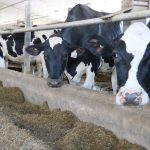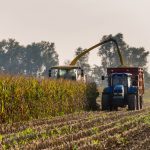
Conference panelist questions research favouring grain-finished beef
Ted Zettel says carbon sequestration from pasture should give grass-fed the nod

Long-awaited regulatory approval granted to Canada Royal Milk
Chinese-owned manufacturer now plans to make infant formula for the North American market

Newly-infected pigs most likely to yield lab test answers
Post-mortem specialists offer tips on how to sample pigs on-farm to aid diagnostics

CFIA on alert as avian influenza turns up on U.S. dairies

Local feeds can help limit hog climate impact
Researchers work to figure out fibre, amino acid, fat profiles to expand hog feed options

Strategies for producing antibiotic-free pork
Management, genetics and feed reduce the risk of antibiotic treatment in pigs

Dairy management changes may offer answers to butterfat equation
With feed additive, analyze the numbers to see if it pays

Carrier status for two dairy defects available soon
Lactanet will publish evaluations for defects affecting Holstein and Brown Swiss

Lactanet partners with Angus group for beef-on-dairy genetics
U.S-.based organization also publishes sire data from Canada, Australia

Effects of wet corn growing season harm feed quantity, quality
Low starch and silage heating have both been observed


